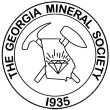Tourmaline
by
Kim Cochran

Tourmaline, like garnet, feldspar and mica, is not one mineral but a group of closely related species. These include: Elbaite, Schorl, Dravite, Liddicoatite, Ferridravite, Uvite, and Chromdravite. They are composed of very complex borosilicates.
The name tourmaline comes from the Sinhalese word, "turamali" which means yellow zircon. Schcri was one of the earliest of the group to be mentioned in literature. It was mentioned in a German manuscript written in 1564. The name "Schorl" was used long before the name tourmaline was given (1703).
Tourmaline is hard (7 to 7.5) but brittle. It is most commonly black but can occur in almost any color, shade, or combination of colors. As in the case with Elbaite, some colors carry distinct names-. Rubellite (red), lndicolite (blue), and Achroite (colorless).
Tourmaline crystallizes in the hexagonal crystal system. The crystals are most commonly seen as long, striated prisms which may be triangular in cross section. Fine, needle-like (acicular) crystals are often found. Tabular crystals are rare.
Members of the Tourmaline Group occur in a variety of igneous, metamorphic, and occasionally sedimentary rocks. Granites, gneisses, and schists are usually the host rock. The most spectacular crystals occur in pegmatites.
Two unusual electrical properties are exhibited by tourmaline. These are Pyroelectricity and Piezioelectricity. Whenever heat or pressure is applied, an electrical charge is produced. This property is used in the high pressure gauges at the weigh stations on our interstate highways. A tiny needle of tourmaline is producing a charge in these gauges.
Ordinary tourmalines have been known for centuries. In 1703, a parcel of gem material arrived in Amsterdam from Ceylon (now Sri Lanka). The cutter realized that some of this yellow gem rough was different and for nearly twenty years tourmaline was known as a yellow or yellowish green gemstone. In 1820, Elijah Hamlin and Ezekial Holmes made the first important discovery in the U.S., near Paris, Maine. These stones were brilliant greens, blues, pinks. In the late 1800's, the California deposits were discovered. Tons of crystals were produced from these mines. Many of the crystals from these mines are blues and reds. Much of this material was shipped to China to be carved. Soon after, the Brazilian deposits were uncovered. Brazil is the top producer of specimen and gem tourmaline. Other notable deposits are in Nigeria, Madagascar, Mozambique, Nepal, and the "Soviet Union". Most recently, fine material has been produced from Pakistan and Afghanistan.
In Georgia there are no gem tourmalines. However, Schorl is very abundant. The largest crystals occur at the Cochran Mine (no relation), near Ball Ground. Here the prisms reach a length of three feet and may be a foot and a half across.
References:
Dietrich, R.V., 1985, The Tourmaline Group.
Guilbert, John M. and Charles F. Park, Jr., 1986,- The Geology of Ore Deposits,
Pough, Frederick H., 1983, Peterson Field Guides: Rocks and Minerals.
Pough, Frederick H., 1969, The Story of Gems and Semiprecious Stones.

Copyright © Georgia Mineral Society, Inc.
